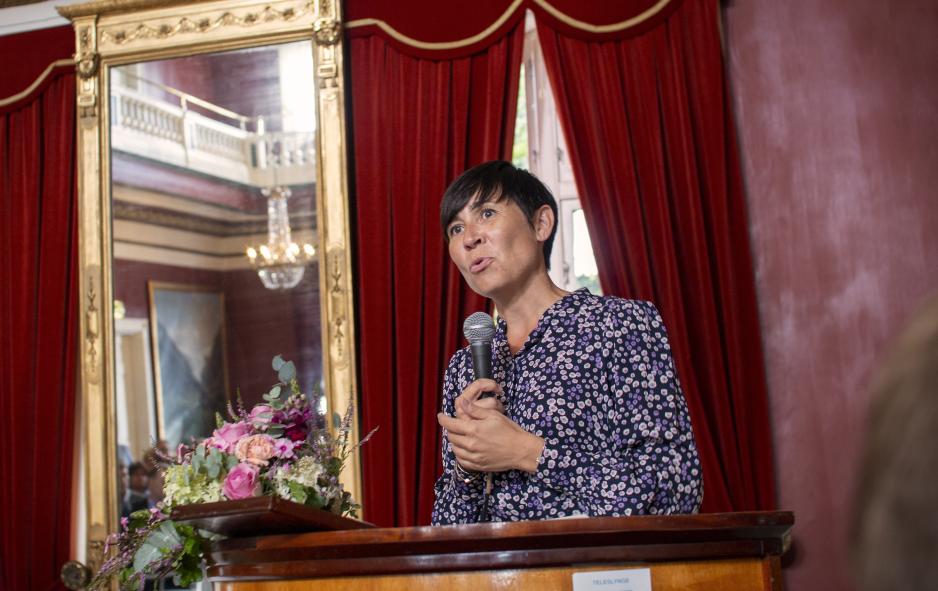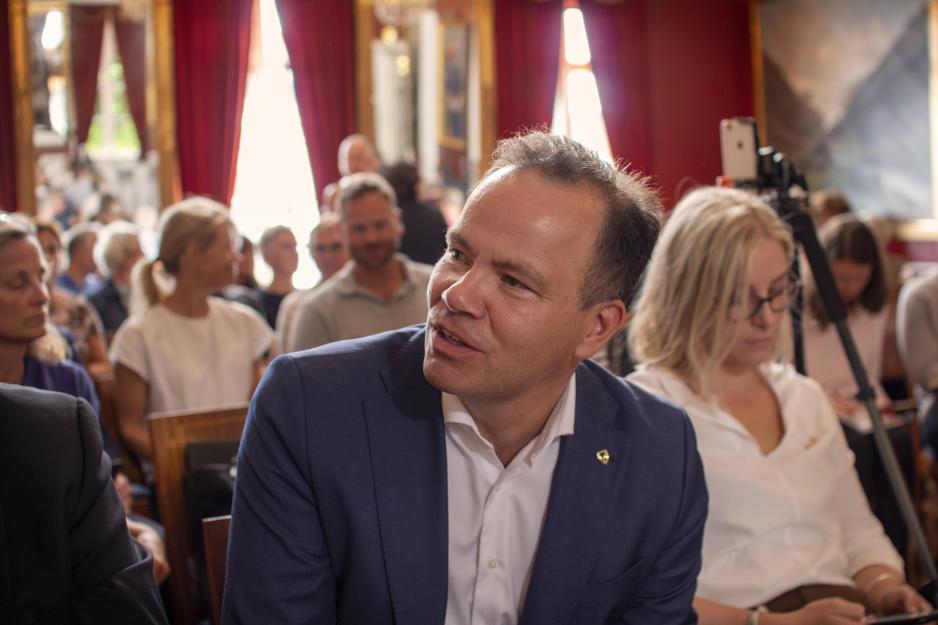Norwegian Foreign Minister about Russia: - The Political Distance Increases

Much of our wealth creation takes place in the High North. Many other countries focus solely on protection. We want to balance growth and protection, says Foreign Minister Ine Eriksen Søreide about Norway’s new Arctic policy whitepaper. (Photo: Amund Trellevik)
The Norwegian government is working on a new High North Strategy. The Foreign Minister admits that the strained relationship with Russia makes the work harder.
ARENDAL: - Our relationship with Rusisa is constant and a defining factor in Norwegian high north policy. However, the political distance between Russia and the West is increasing, and the political space is narrowing down. Thus, it will be all the more important for us to use what leeway we have, says Foreign Minister Ine Eriksen Søreide (Conservatives).
New High North Policy in a year
During the first day of the Arendal Week, the Solberg government Monday lifted the veil to reveal some of the contents of the upcoming High North Policy, which will be presented next autumn.
It has been nine years since the last time a Norwegian government worked out such a document, a so-called working document for policy areas in the High North. Even though the government presented a so-called High North Strategy two years ago, a new whitepaper about High North policies will define much of what Norway is to do in the Arctic during the coming years.
And as is the case for Norway, the relationship to Russia is frequently mentioned be it in the context of fisheries, oceans, oil or environmental protection, when High North whitepapers and strategies are to be worked out.
From the podium of the old Town Hall in Arendal, Søreide said that Norway will continue to balance the two pillars that have remained firm in Norwegian Russia policy through decades; reassurance and deterrence.
However, the Foreign Minister also admitted that she is worried about the direction Russia is taking and that the country is moving in an increasingly authoritarian direction.
- Russia has revived its old base defense on the Kola peninsula, which has direct consequences for our immediate neighborhood. Dialogue and reassurance on the one hand and firmly rooting of our NATO membership on the other hand create balance. Meanwhile, we are aware that Russia is moving in an increasingly authoritarian direction where the situation for human rights and civil society are difficult. Today, we are looking at a amore assertive Russia at the same time as both countries need political dialogue, be it about nuclear safety issues or fisheries, Søreide said.
- Response to Russian activity
When asked by the moderator about whether Norway may have provoked Russian military expansion in the Arctic through e.g. allowing rotation of American soldiers in central and northern Norway, Søreide responds:
- A lot of what happens [with Norwegian build-up, journ.note] is a response to Russian activity. Russia has annexed the Crimea and there is still a war going on in eastern Ukraine, one that does not appear likely to stop any time soon. Thousands of people are killed there. In my opinion, it is clear that when Russia increases its activity, it would be irresponsible of us as a neighbor and NATO member not to increase our military presence.
- We have a geographically strategic position in the North Atlantic. At the same time, we have different preconditions from those of other countries for how we understand Russia. We can balance others’ view [of Russia, journ.note] and through thus contribute to a lower level of tension, Søreide says.
Søreide stresses that the new whitepaper is to focus on issues that matter for people who live in the High North. The open channels that Norway has to Russia today, such as the Barents cooperation, the Arctic Council and the bilateral commission meetings will be vital.
Political contact on government level was put on hold following the Russian annexation of the Crimea in 2014, however, during the past year contact has increased. In 2018, there were 11 political meetings between Norway and Russia, according to Søreide.
Prime Minister Erna Solberg’s meeting with President Vladimir Putin during the Arctic summit in St. Petersburg last April was the first time in eleven years that the heads of government in Norway and Russia held bilateral talks.
Balancing growth and protection
Over the next couple of months, political stakeholders such as the northern county councils, the Sami parliament and other professional communities are to provide their input to the government prior to the whitepaper’s being presented in the autumn of 2020.
The Foreign Minister stresses that developing the High North is in the common interest of all. If we do not succeed, we will not be able to run Norway well, Søreide argues.
- Unlike some other countries that also have a “High North”, Norway has a large portion of its population in the High North. 10 percent of our inhabitants live there. We actually have to spend time and energy to explain that our High North does not consist of polar bears and desolate plains, but rather that people live there. And these people study at recognized institutions and have children and work there, Søreide says and adds:
- Much of our national creation of wealth takes place in the North. Many other countries have a one-sided focus on protection. We are to balance growth and protection.

Tomas Norvoll, Nordland County Councilor. (Photo: Amund Trellevik)
Warns about lump posting
Nordland County Councilor Tomas Norvoll warns about what he refers to as a growing crisis of trust between the north and the south, between the periphery and central areas. He says a new High North whitepaper should include concrete projects.
- The best way of countering such a crisis of confidence is to create new activity. Thus, we must dare to discuss concrete major projects. Landing the Johan Castberg [offshore petroleum] field in Finnmark may be one such project, Andøya Space Port in Nordland another, that can both create a brand new value chain in the region, says Norvoll.
The County Councilor also points out that specific High North area projects should be projects not found elsewhere in the country.
- One cannot refer to any road investment or new student places as “high north policy”. Because then we would have to create separate “west Norway” or “east Norway” policies too, Nordvoll says.
This article was originally published in Norwegian and has been translated by HNN's Elisabeth Bergquist.

